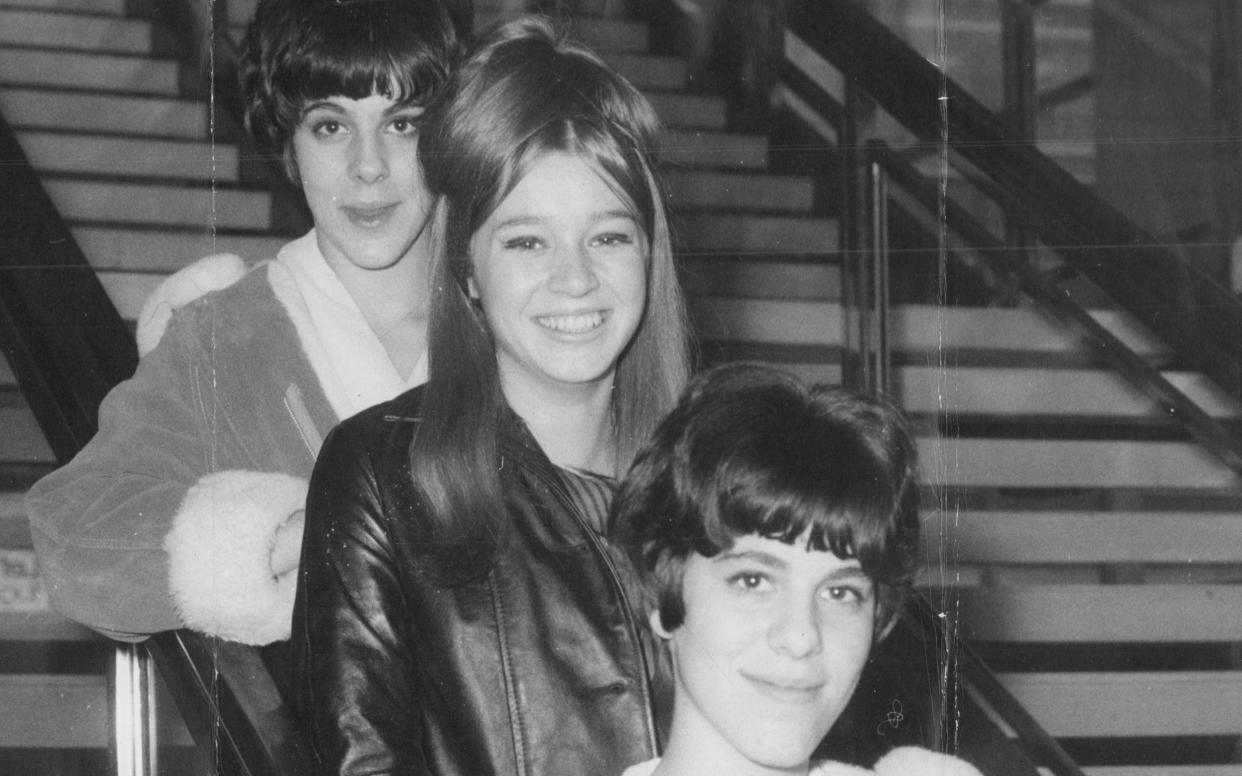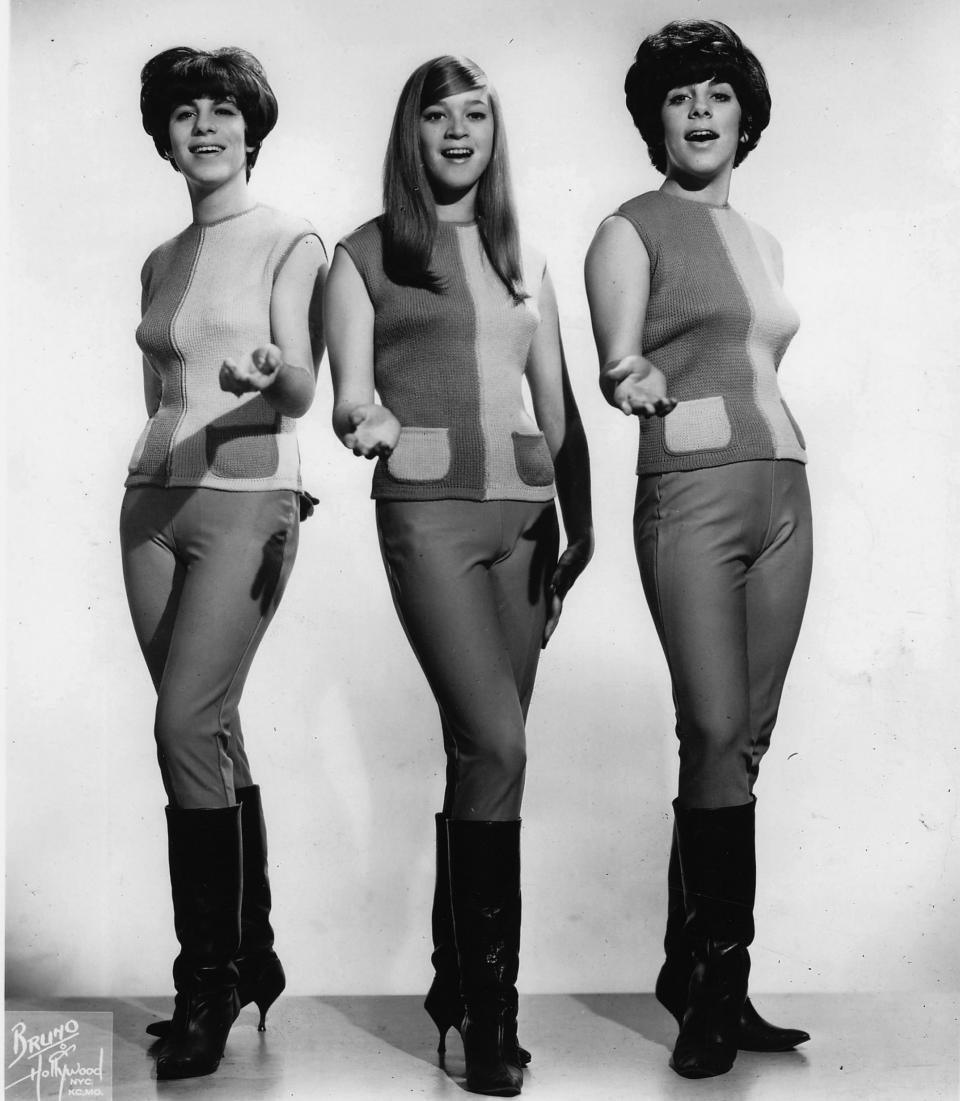Mary Weiss, lead singer of the Shangri-Las who had a UK smash hit with Leader of the Pack – obituary

- Oops!Something went wrong.Please try again later.
Mary Weiss, who has died aged 75, was the lead singer of the 1960s American girl band the Shangri-Las, who enjoyed hits about teenage love and tragedy such as Remember (Walking in the Sand) and Leader of the Pack; she was 15 when she released her first record, and 16 when she bought her first gun – protection from the unwanted attention that came with fame.
The Shangri-Las were formed by the blonde-haired Mary Weiss, her sister Betty and their school friends, the brunette twins Mary Ann and Marge Ganser. By 1963 they were singing on street corners in Queens, New York, and playing for local dances. They were discovered by George “Shadow” Morton, a former ice-cream salesman who replaced their original chiffon dresses and high heels with edgier tight trousers and black leather waistcoats.
After an abortive single for Kama Sutra Productions, Morton struck gold with Remember, in which the Shangri-Las held their own above a cacophony of kissing sounds, train noises, seagull cries and car crashes. It was an immediate hit, reaching No 5 in the US charts and No 14 in Britain and locking the girls into a nonstop round of promotions, shows, rehearsals and recordings.

The Shangri-Las appeared with the Rolling Stones on their 1964 US tour, with The Beatles in New York, and in Texas with James Brown, who was startled to discover that they were not black. In October 1964 they visited the UK, though without Betty, who often took time out. By the end of the year the Shangri-Las were the most famous girl-band in the world.
Their biggest hit, Leader of the Pack – an extraordinary three-minute melodrama about death, lost love and motorcycles – became one of the most distinctive singles of all time. It was banned by some British radio stations while ITV’s pop-music television show Ready Steady Go! refused to show the girls performing the number in case it fuelled violent clashes between mods and rockers. Yet still it reached No 11 in Britain.
Leader of the Pack was also the beginning of the end for the Shangri-Las. Their next single, Give Him a Great Big Kiss, only reached No 18 in the US, in 1965 (though it was later covered by the New York Dolls), while Maybe barely registered at No 91. Another tear-jerking song, I Can Never Go Home Anymore, with its impassioned screams and lavish production, helped the Shangri-Las return briefly to the Top 10, but turned out to be their final hit.

There was a – perhaps inevitable – downside to the fame, however. The group was on tour once when Mary Weiss spotted a hand coming through a glass panel in her hotel room door. “We were in a state where it was legal to buy a gun,” she told the Telegraph magazine. “So I walked into a store, showed my ID and bought a Derringer. I was 16 years old.”
Mary Weiss was born in the rough Cambria Heights area of Queens on December 28 1948, the youngest of three children. Their father, who worked for the telephone company, died when she was six weeks old and Mary, Betty and their brother George were raised by their mother, Elizabeth.
She was educated at Andrew Jackson High School and at the age of 15 was, with 17-year-old Betty and the 16-year-old Ganser twins, signed to Red Bird Records. Those contracts, undertaken by their mothers without advice, left the girls with a legal mess that rumbled on for decades.
“I could probably have survived it, but the litigation was thicker than the music, so why go there?” she said. “I always loved music and it somehow got destroyed along the way.”
The Shangri-Las parted company in 1968 and Mary Weiss took off for the hippie life in San Francisco, which largely involved roller skating around Golden Gate Park. She returned to New York and by the 1990s was fitting out apartment blocks, though her biggest project was destroyed in the 9/11 attacks when a hijacked aircraft’s landing gear came through the roof
The band reformed briefly in 1989, though as a trio because Marge Ganser had died in 1971. Thereafter Mary Weiss was on her own, because Mary Ann Ganser died in 1994 and her sister Betty refused to return. In 2005 she released a solo album, Dangerous Game (2007), a pop-punk sound that occasionally echoed the sound of her heyday, though with her voice now much deeper.
This return to the public eye provided opportunities to reminisce, and Mary Weiss recalled a food fight during a party at Dusty Springfield’s home in London in 1965. “She really liked to throw stuff. I was hiding under a desk and everyone else was throwing food at each other,” she said. “Dusty taught me how to throw crockery, too.”
Mary Weiss’s first two marriages were dissolved and she is survived by her third husband, Ed Ryan.
Mary Weiss, born December 28 1948, died January 19 2024

